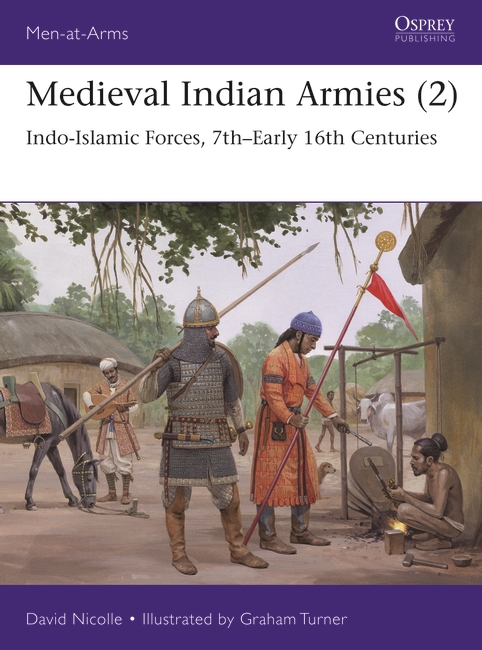
Here are two Osprey publications which, rather unusually, sprang to mind during a wedding reception. Having written Mughul India 1504–1761 (MAA 263, 1993) before visiting the Indian subcontinent, I found myself winging my way to Kolkata in the spring of 2012. There I and my family would attend my son’s wedding reception, surrounded by more garlands of flowers than we could have imaged assembled in one location. Bowled over by the hospitality of my daughter-in-law’s extended family, by the overwhelming sights, sounds, scents and tastes of India, and by the sheer magnificence of the country’s architecture, art and scenery, I decided that the subcontinent’s medieval history deserved an Osprey book. In the event this subject proved to be so colourful and complex that I wrote two for the Men-at-Arms series: Medieval Indian Armies (1): Hindu, Buddhist and Jain (MAA 545, 2022) and Medieval Indian Armies (2): Indo-Islamic Forces, 7th–Early 16th Centuries (MAA 552, 2023).
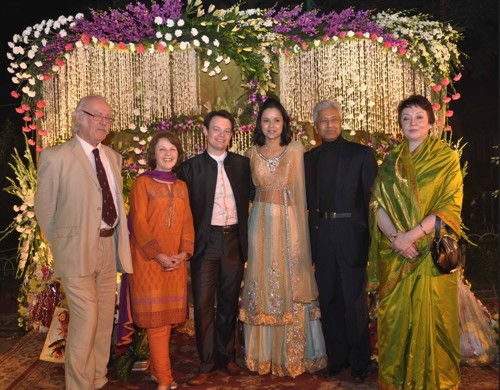
The author (far left) perhaps already thinking of a possible Osprey book (or two)
It had, in fact, soon become obvious that a single visit to major cultural sites and museums in and around Delhi, then to Kolkata and the superb but abandoned medieval cities of Pandua and Gaur, would not be enough. To do the subject even marginal justice, I and my wife would have to visit the Deccan area of south-central India. The result was a trip to some of the main monuments of the Hoysala Empire (c.1050–c.1355), including the Hoysala capital of Halebidu, plus a number of museums. This second visit also involved the sort of self-planned, self-organised adventure travel that we had done earlier in life. Furthermore, the results exceeded our most optimistic expectations while adding a substantial number of photographs of carvings of medieval warriors and other “chaps in armour” to my archive. The latter collection had been initiated by my late father, Patrick Nicolle the well-known historical illustrator and member of the group of like-minded enthusiasts who founded The Arms and Armour Society way back in 1948.
The books follow a generally similar pattern, Medieval Indian Armies (1), Hindu, Buddhist and Jain starting with an overview of India and its varied cultures during the period under consideration, the climates and peoples involved. The cultural preconceptions and prejudices of these people, their neighbours are considered, along with those of ‘westerners’ towards medieval Indian civilization. A Chronology attempts to untangle a very complicated period in history, followed by a greatly simplified look at the political systems and fragmentation which characterised the period. Cultural unity and diversity were both features of medieval India, as was the important role played by elephants, horses and camels in medieval Indian warfare. A look at communications, trade, technology and the period’s remarkable scientific achievements is followed by an overview of arms and armour. The book concludes with what I hope will be a useful ‘Further Reading’ list.
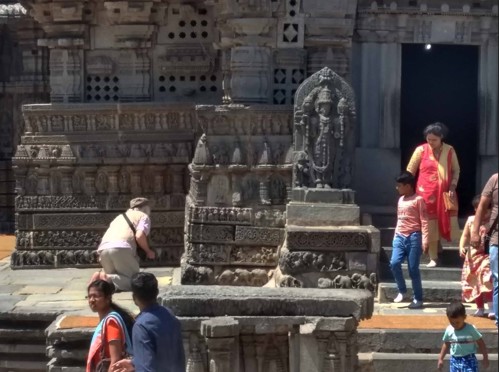
David Nicolle studying carvings at Somanathapura Temple, with local visitors studying him (18 Feb 2020)
Most of the photographs in this volume were taken during my two visits to India in 2012 and 2020, before the Covid epidemic brought such enjoyable research to a juddering halt. The colour plates by Graham Turner remain a source of intense satisfaction for me. Furthermore I believe that they offer information which has not been available before on India in the 5th–7th centuries, northern India in the 8th and 9th centuries, India in the 10th and 11th centuries, northern India in the 12th and 13th centuries, transport in the Deccan and southern India 12th and 13th centuries, cavalry and infantry in the Deccan and southern India 12th and 13th centuries, Indian armies of the 14th century, and Indian armies of the 15th century.
Medieval Indian Armies (2): Indo-Islamic Forces, 7th–Early 16th Centuries starts with an attempt to place the 8th-century AD Arab-Islamic invasion of north-western India within the broader history of the Indian subcontinent’s relationship with its neighbours in Afghanistan, Iran, the Arabian Peninsula and Central Asia. Next comes a Chronology that is slightly more straightforward than that of the first volume. It is followed by a look at the remarkable history of cultural exchange between medieval India and its neighbours, especially the emerging powers of the eastern regions of the Islamic world and within northern India itself. This in turn involved a clash of military traditions that I have tried to explain in the next section, along with the neglected subject of the Islamic Caliphates’ eastern frontier provinces neighbouring and within what is now Pakistan.

Hoysala hero stone in the Archaeological Museum at Halebidu
The remarkably successful armies of the Ghaznavid and Ghurid sultanates (c.950–1225), their conquests in northern India and the establishment of what are regarded as the first true Indo-Islamic states, come next. These realms flourished then fell, to be replaced by the more emphatically Indian sultanates of Delhi and Bengal (c.1200–1525). Further south, in the Deccan and southern India, other Indo-Islamic dynasties arose, the most successful still being major regional powers when the Portuguese arrived at the start of the 16th century (see The Portuguese in the Age of Discovery c.1340–1665, MAA 484, 2012). This second volume again concludes with a list of suggested further reading.
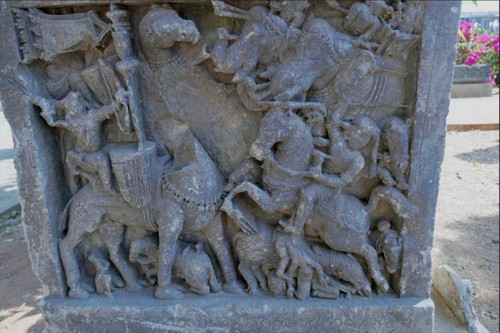
Hoysala hero stone in the Archaeological Museum at Halebidu, detail
The colour plates in Medieval Indian Armies (2): Indo-Islamic Forces, 7th–Early 16th Centuries are again by Graham Turner and illustrate the following: India’ first Arab-Islamic invaders, 7th to mid-8th centuries; armies of Islam’s easternmost frontier, late 8th to mid-10th centuries; Ghaznavid field armies, 10th–12th Centuries; Ghaznavid palace troops, 10th–12th centuries; Ghurid armies, late 12th and early 13th centuries; armies of the early Delhi and Bengal sultanates, mid-14th to 15th centuries; Bahmanid armies, mid-14th to early 16th centuries; armies of the later Delhi and Bengal Sultanates, 15th to early 16th centuries.
It is my sincere hope that these two books in the Men-at-Arms series will encourage other scholars and enthusiasts to write for Osprey on the subject of medieval India, and indeed ancient India, which similarly remains a neglected subject area. What we now need is books that focus upon particular periods within what European and American historians still tend to call the Middle Ages, or on specific regions within the Indian subcontinent. Then there is what is referred to as medieval Greater India, including Myanmar (previously Burma), Malaysia, Indonesia, Indo-China and the Philippines. Come on you younger researchers! Here is a fascinating and profoundly attractive part of the world and of medieval history that is calling out for your attention.
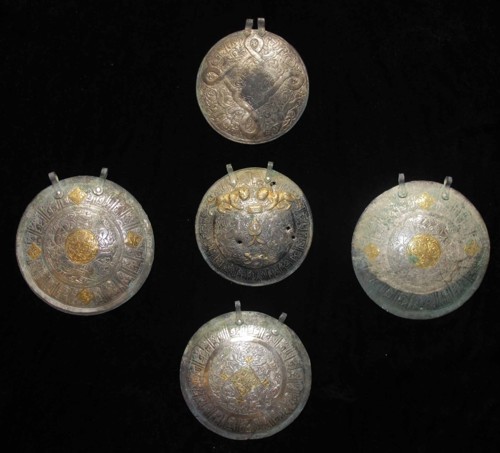
Silvered and partially gilded horse harness elements, Ghurid early 13 cent (Ali Tegatchi collection)


Comments
You must be logged in to comment on this post. Click here to log in.
Submit your comment